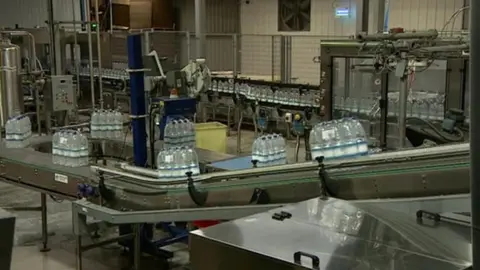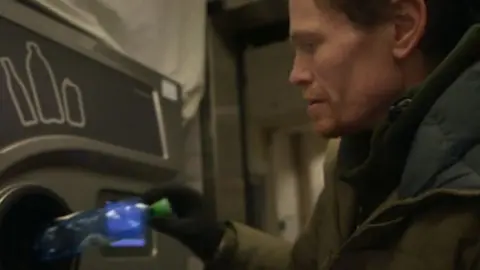Cutting plastic pollution from bottle to bin and beyond
 BBC
BBCFor the last few weeks I've been looking at the problems posed by plastic pollution. From the companies that make and use plastic bottles through to the people who pick up plastic litter on our canals. There have been huge steps forward in reducing and recycling plastic waste but all of us could be doing more.
Inspired by the BBC's Blue Planet II we set out to learn more about the problems posed by plastic. But first, if we're going to talk about plastic, we need to accept that sometimes plastic is a really useful material. As a director of a Midlands spring water firm said to me: "No one wants to take a glass bottle of water to the gym."
At Wenlock Spring in Shropshire they produce about 20 million bottles of water every year in the shadow of Wenlock Edge itself - that actually makes them a smaller player in the Midlands bottled water firmament. They use both glass and plastic for their bottles but are focused on reducing the environmental impact of the plastic containers.
First, it is worth saying the amount of plastic that goes into a bottle has been drastically reduced over the last few years. A typical 500ml bottle of Wenlock Spring used to contain 25g of plastic but thanks to new manufacturing techniques, they now use half that amount. But the company wants to move beyond that and use recycled plastic in the bottles themselves.
100% recycled plastic
The aim is to use 50% recycled plastic, rising to 100% eventually. But it is not easy and indeed makes no sense from a financial point of view as the company says a bottle containing recycled plastic will actually cost them 20% more.

There are aesthetic difficulties with using recycled plastic in this country too. The stream of plastic we collect for reuse is made of plastics of many colours and that can give a browish tinge to bottles that use it. However Wenlock Spring is hopeful a new process will give its bottles a blueish tinge with which it believes consumers will be happy.
The company has also found it hard to source acceptable recycled plastic and only found one firm that could supply the right material it needs for the new bottles.
The Norway way
All of this shows up a bit of a problem with our plastics recycling. In theory, a clear polyethylene terephthalate (PET) plastic bottle could go round and round the recycling system pretty successfully, as happens in Norway. But in Norway there is a deposit-and-return scheme in place which controls the type of bottle right down to the glue used on the label. The end result is a 97% recycling rate and a very pure source of plastics.

Here, of course, we use kerbside recycling and that produces a complex mix of plastics that makes it much harder to extract the right material for a company like Wenlock Spring and their new bottles.
Although this switch to recycled plastic bottles will cost a company like Wenlock Spring in the short term, it hopes it will encourage others to follow its lead and increase demand for recycled plastic as a material. As demand increases, that should start to push costs down and perhaps even lead to us looking again at how we collect and recycle plastic in this country.
Ironically, to tackle plastic pollution, one thing we could do as consumers is continue to buy products like bottled spring water - but make sure those bottles are made of recycled plastic.
Meanwhile, here is the first of our Plastic Hacks - short films on Midlands people, companies and charities with ideas and products that can help reduce our plastic use.
